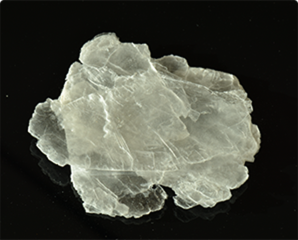Exploring Various Mica Varieties and Their Unique Properties
Different Types of Mica A Comprehensive Overview
Mica, a naturally occurring silicate mineral, is renowned for its unique physical and chemical properties, which make it an invaluable resource in various industries. Characterized by its perfect cleavage, which allows it to be peeled into thin, flexible sheets, mica is primarily divided into two main types muscovite and biotite, along with several other less prevalent varieties. Each type of mica serves distinct applications and is formed under different geological conditions, contributing significantly to its diverse uses.
1. Muscovite Mica
Muscovite, often referred to as white mica or potassium mica, is the most common and widely used type of mica. Composed of potassium aluminum silicate, muscovite is characterized by its light color, ranging from colorless to pale green, and its excellent electrical insulation properties. Due to its high dielectric strength, muscovite is widely utilized in the electrical and electronics industry, particularly in capacitors and insulators. Additionally, its resistance to heat and chemical stability makes it suitable for applications in construction materials, such as joint compounds and paints. The unique translucence of muscovite also allows it to be used in decorative applications, including cosmetics and art.
2. Biotite Mica
Biotite, known as black mica, is a darker variety of mica that is rich in iron and magnesium. Its color ranges from brown to black, and it is typically opaque rather than transparent. Biotite is primarily found in igneous and metamorphic rocks and tends to form in larger sheets compared to muscovite. While biotite is not as widely used as muscovite, it plays a crucial role in geology, as it is often studied for its weathering processes, which can provide insights into the history of the earth’s crust. In some cases, biotite is used in the production of heat-resistant materials and is also studied for its potential applications in the fields of biomaterials and environmental science.
different types of mica

Phlogopite is another type of mica that is similar to biotite but contains more magnesium and less iron, leading to a lighter color that ranges from golden brown to a pale green hue. It is predominantly found in metamorphic rocks, particularly those formed under high-temperature conditions. Phlogopite is especially valued in applications requiring thermal resistance, such as in the manufacturing of refractory materials and as a filler in various industrial applications. Its high dielectric strength also makes it suitable for electrical insulation, similar to muscovite.
4. Lepidolite Mica
Lepidolite is a lithium-rich mica and is notable for its lavender or pink coloration, owing to the presence of lithium-rich minerals. This rare form of mica is primarily used as a source of lithium, which is a critical component in batteries, particularly lithium-ion batteries for electric vehicles and portable electronics. Lepidolite’s unique beauty also makes it popular among collectors and in ornamental applications.
5. Other Types of Mica
In addition to the main types mentioned above, there are several other less common varieties of mica, including zinnwaldite, which contains iron, lithium, and potassium and is primarily found in granite pegmatites. Each type of mica, despite its rarity, has its own niche applications, often influenced by its specific mineral composition and properties.
Conclusion
Mica’s diverse types, including muscovite, biotite, phlogopite, and lepidolite, play integral roles in a myriad of industries, from electronics to construction and cosmetics. As technology continues to evolve, the demand for mica, particularly varieties rich in lithium, is expected to rise, highlighting the importance of sustainable sourcing and responsible mining practices to protect the environments from which these valuable minerals are extracted. Understanding the unique properties and applications of different types of mica not only enhances our knowledge of geology but also informs various industrial processes that rely on this remarkable mineral.
-
Transforming Surfaces with Mica-Enhanced Paints in Coatings and DecorationNewsJul.02,2025
-
The Ultimate Guide to Mica-Based Luminous Colors with Pearlescent PigmentNewsJul.02,2025
-
The Critical Role of Mica in Industrial Applications in Welding and Oil FieldsNewsJul.02,2025
-
Revolutionizing Automotive Aesthetics with Modified Plastics Pearlescent PigmentsNewsJul.02,2025
-
The Secret with Mica Powder for Cosmetics Behind Radiant, Natural MakeupNewsJul.02,2025
-
Enhancing Performance in Polymer Applications with Mica Powder for RubberNewsJul.02,2025
Products categories









